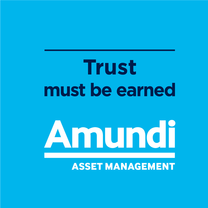Newsroom
Research Paper - Global Investment Views - July 2018
United Kingdom, June 26, 2018

A cloudy summer
Investors have experienced generally low returns so far this year, due to the clouds currently gathering on the horizon, and the approach to risk assets is being characterised by increased caution. This attitude has led to weaker equity markets, wider corporate spreads, and some areas of stress in EM (especially in local currencies). We can identify different fronts that need to be monitored closely in the short to medium term: the evolution of the cycle and potential regime shift, geopolitical issues, and EM anxieties. First, in order to identify a potential regime shift, it is crucial to understand the evolution of the cycle. In the current phase, on the one side, there is an extended cycle in the US and an upward trend in earnings; on the other, however, we are seeing signs of a maturing cycle: global growth looks to be peaking and inflation is rising gently; global liquidity is expected to diminish and leverage is creeping up. In the current environment, central banks are continuing to withdraw their stimulus, with different speeds of adjustment (further divergences emerged between the Fed and the ECB at their most recent meetings). CBs are no longer responding to any bout of volatility and they are not providing umbrellas against political storms. Geopolitical risks are a second sphere of uncertainty. Disagreements within the EU are assuming harsher tones. The escalation of trade disputes are a nuisance (see US vs China but also vs Canada, Europe). Political issues are also weighing on some EM (elections in Brazil, Mexico and Colombia). Idiosyncratic risks (Turkey) add fuel to EM stress, already challenged by higher US rates and the stronger USD. China’s resilience becomes essential in this context. But while these clouds continue to gather, the positive cyclical backdrop is still expected to support earnings growth across the board in 2018 and for most of 2019. In addition, the still-low level of interest rates should support higher valuations and risk appetite. To navigate this multifaceted environment, investors should rethink portfolio construction through time horizons. In the short term, equity continues to be preferred vs bonds. Seeking quality and value in the equity market should help to deal with challenging phases of lower liquidity in the future. Duration should be slightly short overall in the short term. As we move towards the medium term, cyclical slowdown could resurface and the support to risk assets could fade. Duration could become neutral/long again. Currency dynamics will continue to act as shock absorbers, mirroring divergences and creating opportunities from dislocations (selectively in EM, US vs the EUR in the short term). With a long-term perspective, the underlying trends of macro variables point to low interest rates at equilibrium and mean reversion of equity returns around earnings secular trends. This situation will translate into lower return potential for a balanced portfolio in the future. Based on this perspective, in order to combine short-term positioning with long-term awareness, investors should focus on extracting the value left in the market while rethinking long-term strategies focusing on an asymmetric payoff profile to limit the downside when a correction does come, but still capturing long-term risk premia. During this transition, liquidity management and capital preservation will be key.
Experts
Vincent has been Group Chief Investment Officer since February 2022. Previous to that, he was the Group Deputy CIO of Amundi since 2015. He is a member of the Globa[...]
Read moreMonica Defend, Head of Amundi Investment Institute. Monica is Head of the Amundi Investment Institute, which was created in February 2022, and a member of Amundi's Exe[...]
Read moreAbout Amundi
About Amundi
Amundi, the leading European asset manager, ranking among the top 10 global players[1], offers its 100 million clients - retail, institutional and corporate - a complete range of savings and investment solutions in active and passive management, in traditional or real assets. This offering is enhanced with IT tools and services to cover the entire savings value chain. A subsidiary of the Crédit Agricole group and listed on the stock exchange, Amundi currently manages more than €2.3 trillion of assets[2].
With its six international investment hubs[3], financial and extra-financial research capabilities and long-standing commitment to responsible investment, Amundi is a key player in the asset management landscape.
Amundi clients benefit from the expertise and advice of 5,600 employees in 35 countries.
Amundi, a trusted partner, working every day in the interest of its clients and society
Footnotes
- ^ [1] Source: IPE "Top 500 Asset Managers" published in June 2024 based on assets under management as of 31/12/2023
- ^ [2] Amundi data as at 31/03/2025
- ^ [3] Paris, London, Dublin, Milan, Tokyo and San Antonio (via our strategic partnership with Victory Capital)
Footnotes





